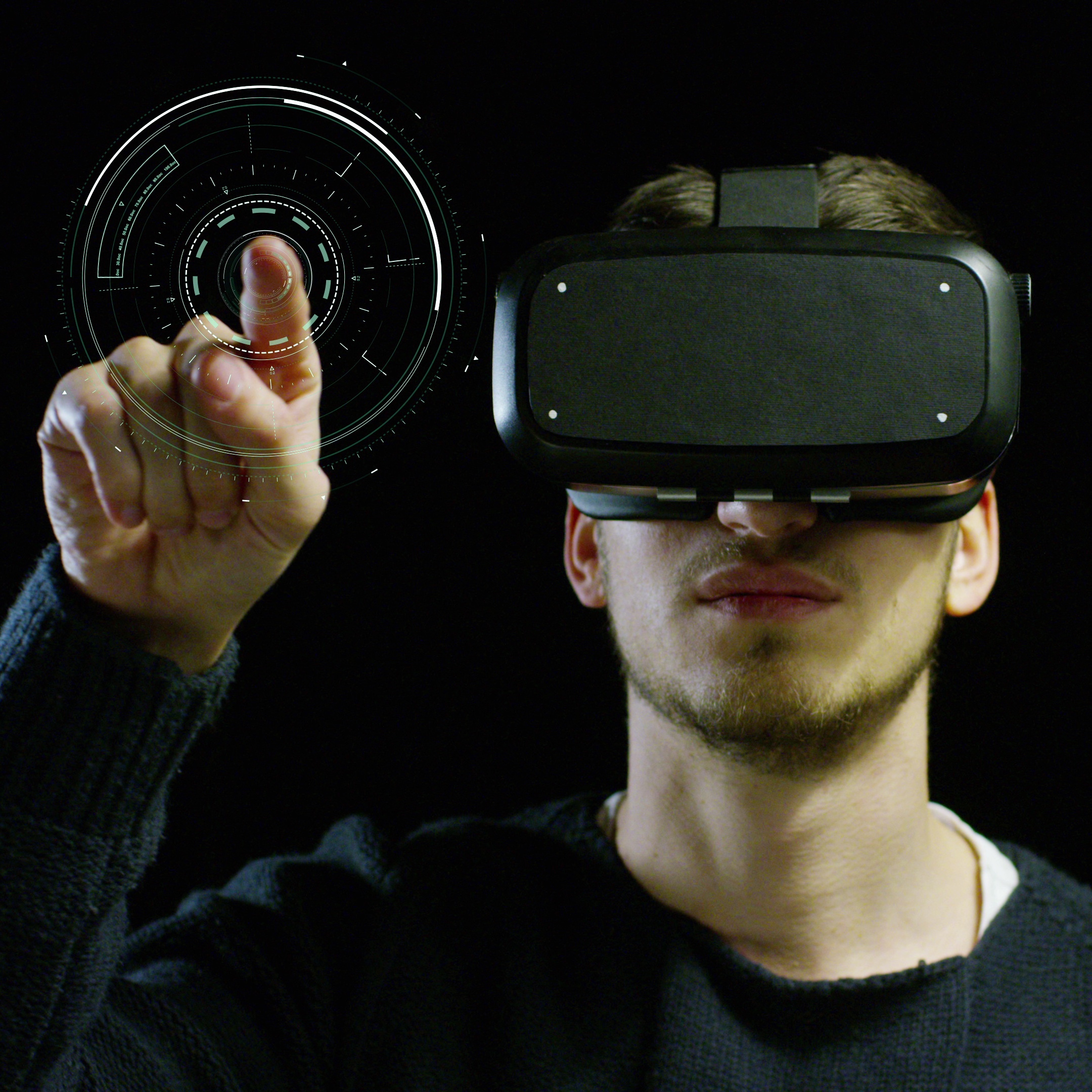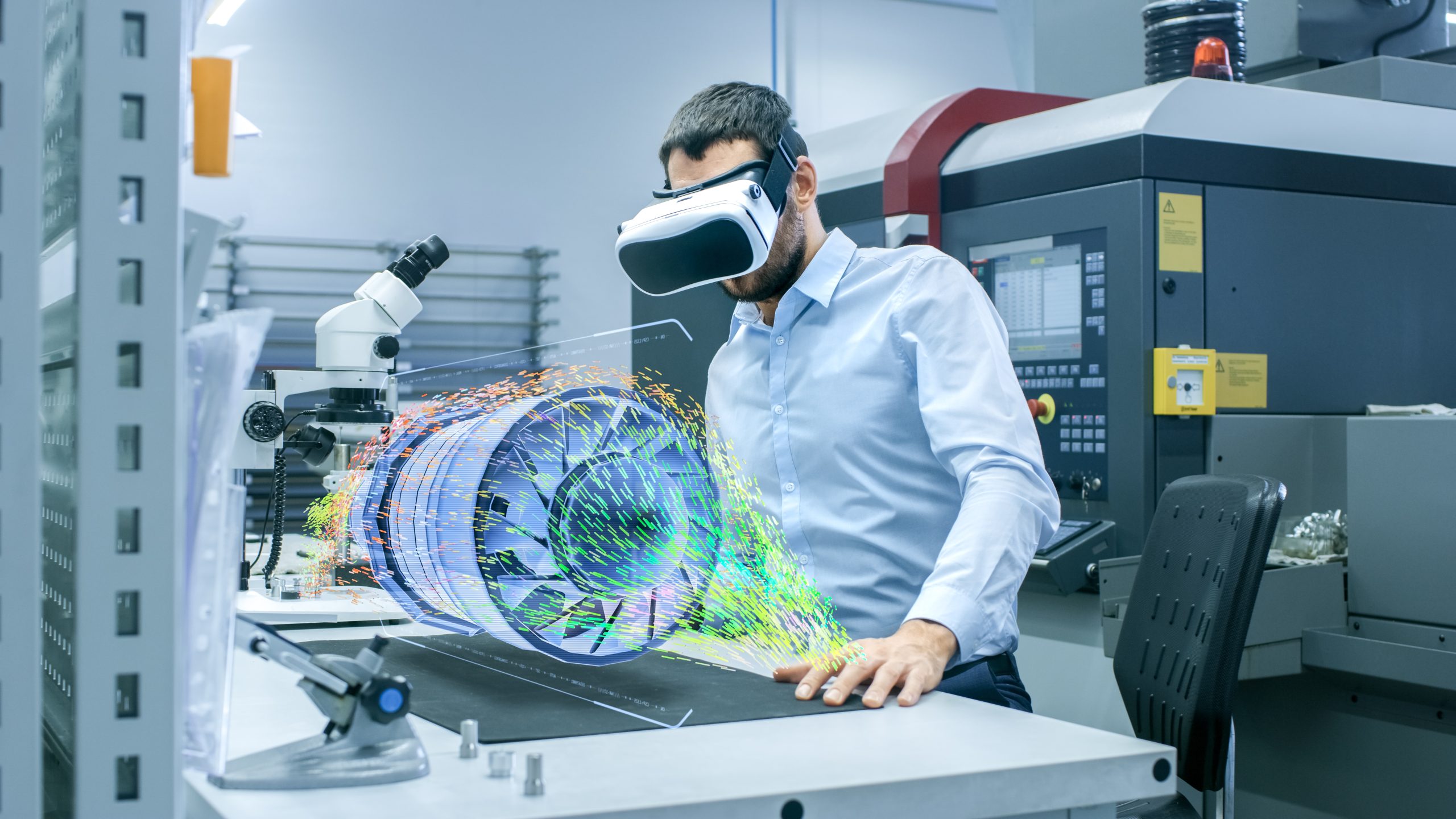Virtual Reality Redefined: Elevating Brands through Immersive Experiences
Imagine slipping on a headset and suddenly immersing yourself in a vibrant, interactive world where the narrative is not just being told to you – you’re part of it. This is not the stuff of sci-fi movies; this is the power of Virtual Reality (VR).
Not long ago, VR was primarily associated with gaming, a niche tool for a particular demographic. Fast forward to the present, and the landscape of VR has shifted dramatically. It has outgrown its gaming cocoon and emerged as a versatile platform that engages a wide spectrum of users, irrespective of age, gender, or tech-savviness. Today, VR is not just about battling digital demons; it’s about entering immersive brand worlds, exploring products in three-dimensional spaces, and being a part of compelling narratives.
Beyond its novelty, what makes Virtual Reality a game-changer is its unparalleled capacity to command user attention. This technology’s ability to craft rich, immersive experiences outshines standard video content by holding the user’s attention for extended periods. It’s not just about increased screen time, though. These experiences imprint on the user’s mind, making a brand unforgettable. As we move forward in this digital age, the potential of VR in revolutionizing brand narratives is just starting to be explored. Let’s dive in!
The Era Of ‘Storyliving’ Is Here
Storytelling, a staple of human culture, has evolved tremendously in the hands of technology. With the advent of Virtual Reality, we have leapfrogged into an era of ‘storyliving’, where audiences do more than just consume narratives – they live them.
Traditional marketing tools, while effective, typically offer one-sided presentations. They tell a story, but it’s often linear, with little room for exploration or interaction from the consumer’s end. VR shatters this mold, placing consumers within a narrative and empowering them to interact and engage with the story at their pace and on their terms. Brands worldwide are harnessing the power of VR to deliver compelling narratives that foster a deeper connection with their audience.
Gucci, known for its luxury fashion and accessories, has embraced Virtual Reality technology to create a captivating and interactive journey for its audience.
In Gucci Town, users are transported into a virtual world replicating the opulent atmosphere and aesthetic of Gucci’s physical stores. Through VR headsets, users can explore various virtual locations, including Gucci boutiques, art galleries, and even the backstage of fashion shows. They can interact with virtual Gucci products, view exclusive collections, and experience the brand’s unique identity and style.
Users can examine the intricate design details of Gucci products up close, visualize how different items would look when paired together, and even virtually try on accessories. This immersive experience provides users a realistic and immersive shopping experience beyond what traditional e-commerce platforms offer.
This shift from storytelling to ‘storyliving’ is a landmark evolution in the marketing world. Brands are no longer just narrators; they are architects of immersive worlds where consumers are protagonists, exploring, interacting, and forming lasting connections.
How Brands Are Leveraging Virtual Reality To Power Storytelling
Crafting Atmospheric Experiences
The magic of Virtual Reality lies in its ability to conjure authentic spaces and atmospheres that extend beyond the confines of traditional visuals. Brands employ this exceptional feature to emulate their physical environments, articulate their brand culture, and deliver immersive experiences imbued with their essence.
Take, for instance, L’Oreal’s innovative approach. They employ Virtual Reality as a recruitment tool, providing potential employees with an immersive virtual tour of their offices, laboratories, and stores. This creative usage of VR encapsulates the brand’s workspace culture and ethos, offering candidates a glimpse into their potential work environment before they ever step foot on the physical premises.
Portraying Brand Identity
Unlike traditional eCommerce, where users engage with static images and textual descriptions, VR transports users into immersive brand universes. In these vibrant virtual worlds, brands can express their unique identity in an interactive and visually engaging way.
Nike, a global athletic footwear and apparel leader, wanted to provide soccer enthusiasts with a truly immersive and unforgettable experience. They partnered with Director Adam Berg and Digital Domain to create Nike’s first virtual reality campaign centered around the Hypervenom II soccer cleats.
The Hypervenom II VR experience allowed users to step into the shoes of their favorite soccer players and experience the game from a first-person perspective. This groundbreaking campaign leveraged Google’s 360-degree video support, making it accessible on platforms like YouTube and Google Cardboard mobile headsets distributed with every shoe purchase. The experience was also compatible with the Oculus Rift, tapping into the emerging virtual reality market.
Designing Narrative
In VR, narrative design elements like typography, color schemes, and stylization become vital narrative devices that sculpt perceptions and guide experiences. Patrón Tequila ingeniously employed these elements in their Virtual Reality experience, taking their customers on a unique journey through their Mexican distillery.
They meticulously incorporated design elements to create an authentic experience that resonates deeply with their audience.
Through VR, users are transported to the scenic agave fields of Jalisco, Mexico, where they witness firsthand agave harvesting. As they progress through the virtual environment, they are immersed in the distillery’s captivating ambiance, observing the traditional production methods and witnessing the artistry behind crafting Patrón Tequila.
The narrative design in the Patrón Tequila VR experience is carefully crafted to evoke a sense of heritage and quality.
Constructing Purposeful Spaces
Today’s brands are creating VR spaces that engage users, serve practical purposes, and add value to the user experience. One notable example is Samsung’s 837X, a groundbreaking virtual reality experience offered by Samsung.
Samsung 837X is a virtual reality exhibition space located in New York City that combines the power of Virtual Reality with the innovative technology of Samsung’s products. The space offers visitors an immersive journey where they can explore various virtual environments and interact with Samsung’s latest devices and services.
By stepping into the Samsung 837X experience, users are transported to different virtual settings, such as a vibrant cityscape or a tranquil natural landscape. They can engage with Samsung’s products in these virtual environments, testing their features and functionalities in a way that goes beyond traditional retail experiences.
Harnessing Data
Lastly, Virtual Reality environments present a goldmine of user data. Companies can exploit this rich source to gather comprehensive user behavior and preferences insights. Unlike traditional methods, VR can track behavior in a three-dimensional space, providing an in-depth understanding of user engagement. This treasure trove of information becomes invaluable when informing future product development and marketing strategies, establishing VR as a pivotal tool for data-driven decision-making.
Incorporating VR In A Brand’s Marketing Strategy
As we’ve seen, Virtual Reality has the potential to redefine the way brands interact with their audience and market their products. But how can brands effectively incorporate VR into their marketing strategies? Let’s explore.
Using VR As A Communication Platform
Virtual reality provides an interactive platform to take your marketing campaigns to the next level. Think of it as a blank canvas where your brand can creatively express its values, objectives, and offerings. Unlike traditional marketing platforms, VR immerses the audience in the narrative, creating a more engaging and memorable experience. The more active the audience’s participation, the deeper their connection with the brand.
Understanding Your Audience
Just as important as the message itself is understanding the audience. To effectively tailor your VR content, it’s essential to comprehend your audience’s behavior, the channels they engage with, and their expectations. This involves studying your audience’s interaction patterns, preferences, and feedback on different platforms, including Virtual Reality.
Telling Your Brand’s Story
Storytelling has been a cornerstone of marketing for years, but VR elevates it into ‘storyliving’. It creates a unique sense of presence, where users are passive viewers and active participants in the narrative. This approach, combined with VR’s capabilities, can articulate your brand’s story in a way that deeply resonates with the audience, making it engaging and unforgettable.
Presenting Products in a New Light
VR offers an opportunity to reinvent product presentation. By allowing customers to explore products in a virtual environment, you augment their shopping experience, making it more personal and interactive. This adds value to the shopping journey and can impact purchase decisions, encouraging higher conversions.
Boosting Brand Awareness
Incorporating VR into your indirect sales strategy can improve your brand’s visibility. Creating buzz and offering unique experiences can elevate brand awareness and enhance your brand’s status. A well-executed VR campaign can attract media attention, stimulate social sharing, and drive word-of-mouth publicity, leading to a larger, more engaged audience.
Ultimately, the key to successfully incorporating Virtual Reality into your marketing strategy lies in understanding its potential and aligning it with your brand’s goals and audience expectations. As more brands explore the power of VR, certainly, we’re just scratching the surface of what’s possible in this exciting realm.
Conclusion: The Evolution of VR From A ‘Nice-To-Have’ To An ‘Essential’ Tool
The innovative use of VR in marketing campaigns demonstrates the power of technology to captivate audiences, drive brand differentiation, and spur growth in a fiercely competitive market. As we delve deeper into the digital era, the boundaries between our reality and the virtual world continue to blur, turning VR from a luxury into a necessity.
Brands that can harness this transformative technology, adapt to the changing digital landscape, and present their narratives in an immersive, interactive format will undoubtedly shine in the crowd. But this isn’t just about keeping up with trends. It’s about envisioning the future of marketing, taking bold steps to get there, and creating exceptional experiences that will stay with consumers long after they’ve left the virtual realm.
As we stand on the precipice of this exciting new era, we at magineu are committed to helping your brand navigate and leverage Virtual Reality’s opportunities. We specialize in creating an immersive, polysensory brand and customer experiences at scale, bringing stories to life in the most engaging ways possible.
The future of brand storytelling is here, and it’s virtual. Are you ready to embrace the shift? Reach out to us at magineu to begin your journey into immersive marketing.
Reach out to magineu now. Step into the future of immersive brand storyliving.



